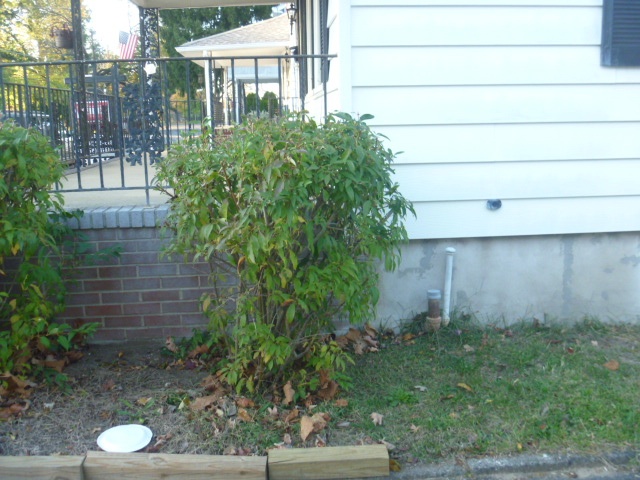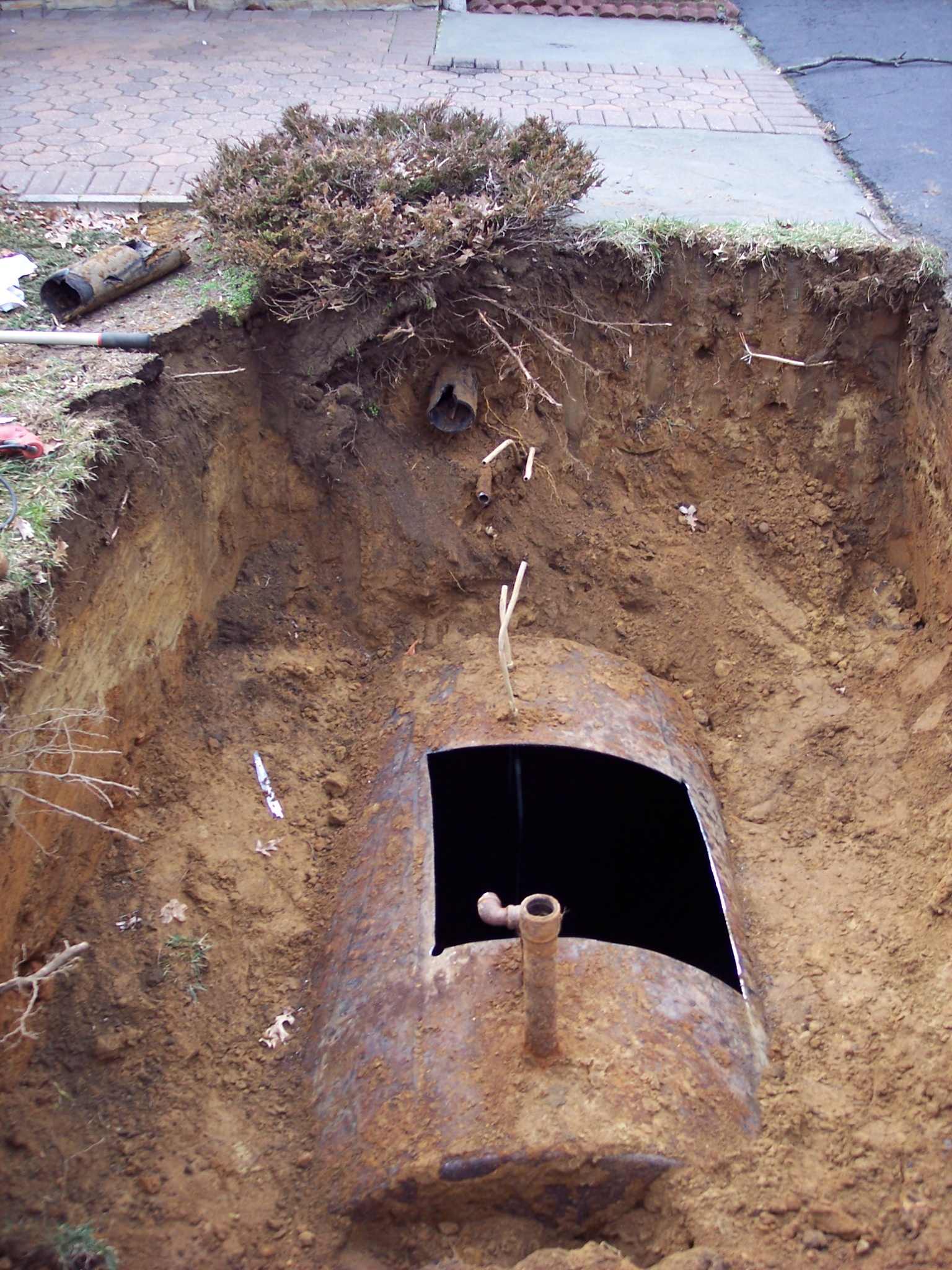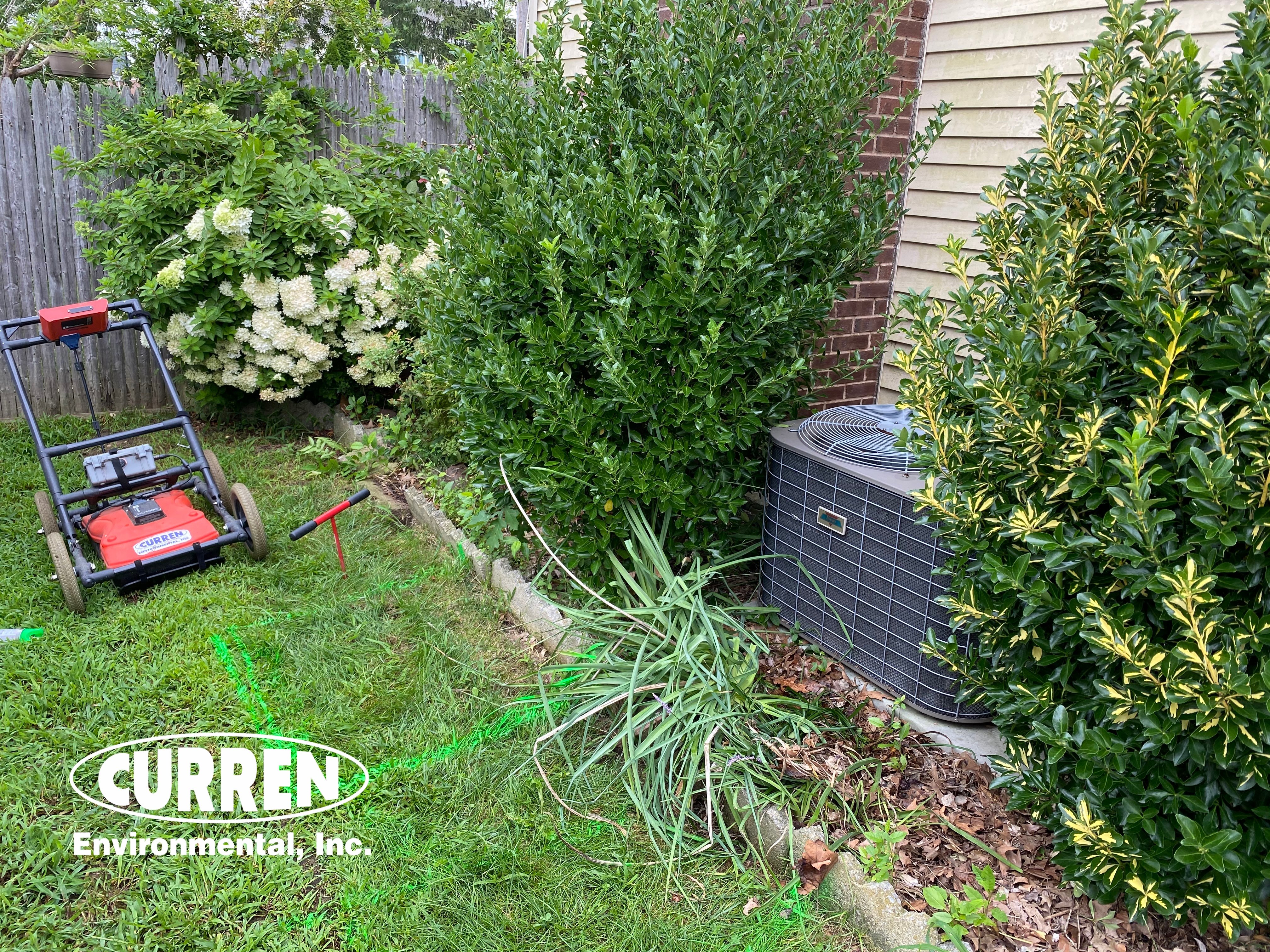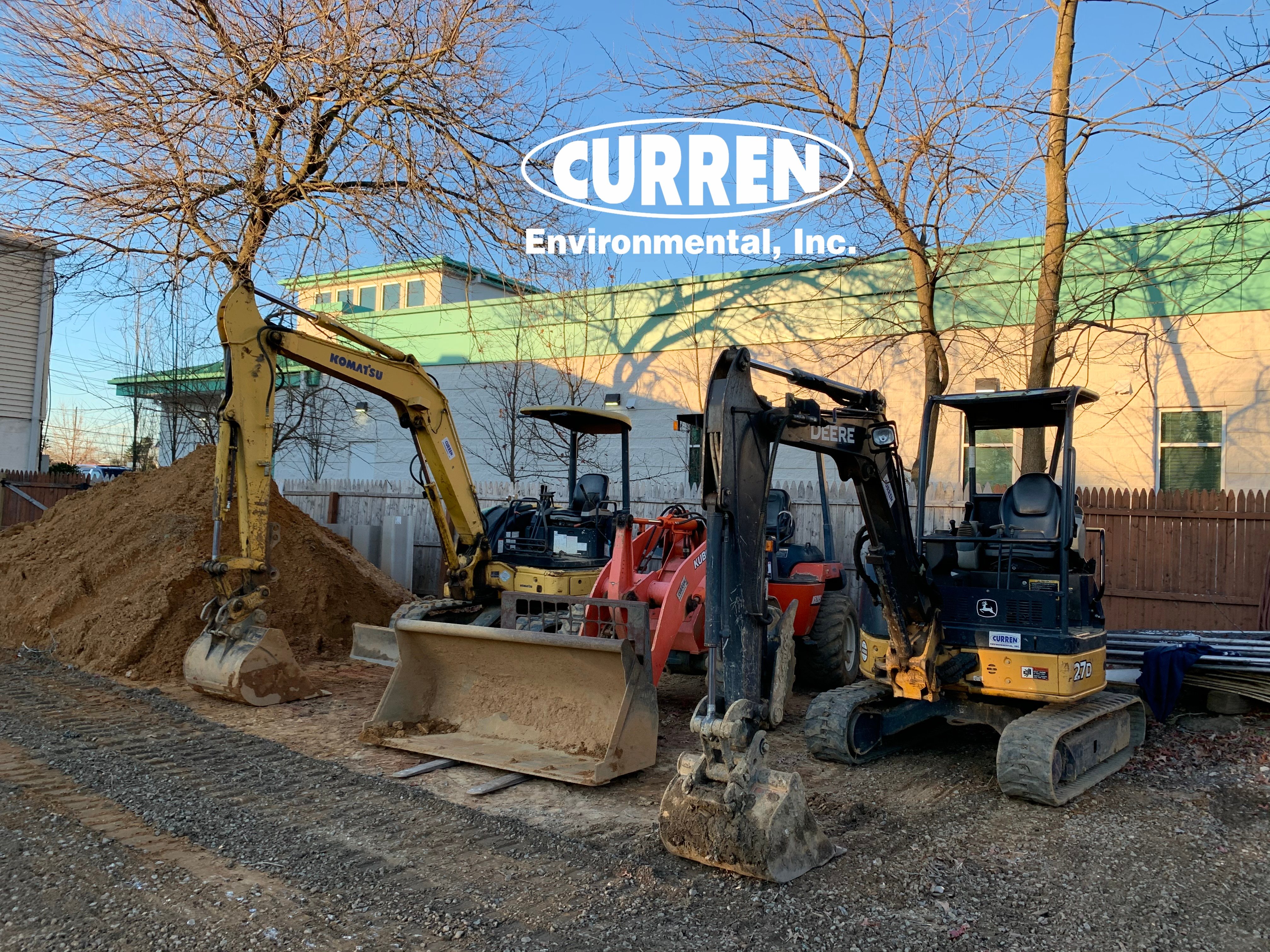-
 Oil tank fill cap in a sidewalk
Oil tank fill cap in a sidewalk -
 Basement heating oil AST fill & vent pipes.
Basement heating oil AST fill & vent pipes. -
 Cut oil tank supply line
Cut oil tank supply line -
 Oil tank fill cap
Oil tank fill cap -
 Oil tank that that was connected to the fill cap in the prior photo.
Oil tank that that was connected to the fill cap in the prior photo. -
 Tank located beneath ac unit. White line notes tank outline.
Tank located beneath ac unit. White line notes tank outline. -
 Oil tank found by an oil tank sweep with GPR. Tank was 15' away from the house with no evidence that it was present.
Oil tank found by an oil tank sweep with GPR. Tank was 15' away from the house with no evidence that it was present. -
 Tank found during a tank sweep. The white dots mark the location of the tank. The paver sidewalk hid all traces that the tank was present.
Tank found during a tank sweep. The white dots mark the location of the tank. The paver sidewalk hid all traces that the tank was present.
Tank Sweeps or Tank Survey
An oil tank sweep is one of the best ways to locate buried oil tanks.
Tank sweeps are also part of any buyer's due diligence process. Undisclosed abandoned underground oil tanks (USTs) are a financial liability that can loom over a site. Buried oil tanks that have not been properly abandoned (Meaning tested and documented that the tank has not leaked) are a cause for concern. Not properly abandoned means, still containing oil or a tank that has or is leaking but is undisclosed. These tanks are often well past their useful service life and have often leaked. Buying a contaminated property means you are responsible for the cleanup costs even though you may have no prior knowledge of the contamination. Cleanups (remediations) are costly – ranging from $5,000 to $100,000.00. These tank leaks are often excluded from insurance policies, so you the homeowners will not pay for the loss and you the homeowner wind up paying for someone else problem.
Tank Sweep Questions
Call our Office Monday to Friday Eastern Standard Time
888-301-1050
Did You Know?
- Oil heat was popular from the 1940s into the 1990s.
- A typical life span of an oil tank is similar to a roof. Meaning if a roof was replaced so should a tank.
- Many oil tanks were abandoned with oil in them when homes were converted to from oil to gas. So abandoned tanks were just that abandoned.
- Some homeowners have removed tank piping to disguise a tank location to avoid having to deal with the tank themselves. Tank sweeps can find these tanks.
- Tank Sweeps with GPR (Ground Penetrating Radar) are the most though way to scan for a tank. Tank Sweeps using only metal detectors can give false information as the metal detector is subject to interference from metal siding, mesh in stucco, metal in concrete, buried metal pipes, and ferrous present in the ground.
- Home inspections do not include Oil Tank Sweeps as part of their inspection.
Curren Environmental has over 25 years of experience with oil tanks and that translates into the performance of experienced and thorough Tank Sweeps. Our technicians have years of knowledge in dealing with oil tanks, including:
- Knowing of how oil tank systems work.
- What piping to look for when performing a tank sweep.
- The difference between single and supply and return oil lines.
- Direct fill and remote fill bungs.
- Typical and unusual locations of buried oil tanks.
- Geophysical signature interpretation of buried tanks with GPR



